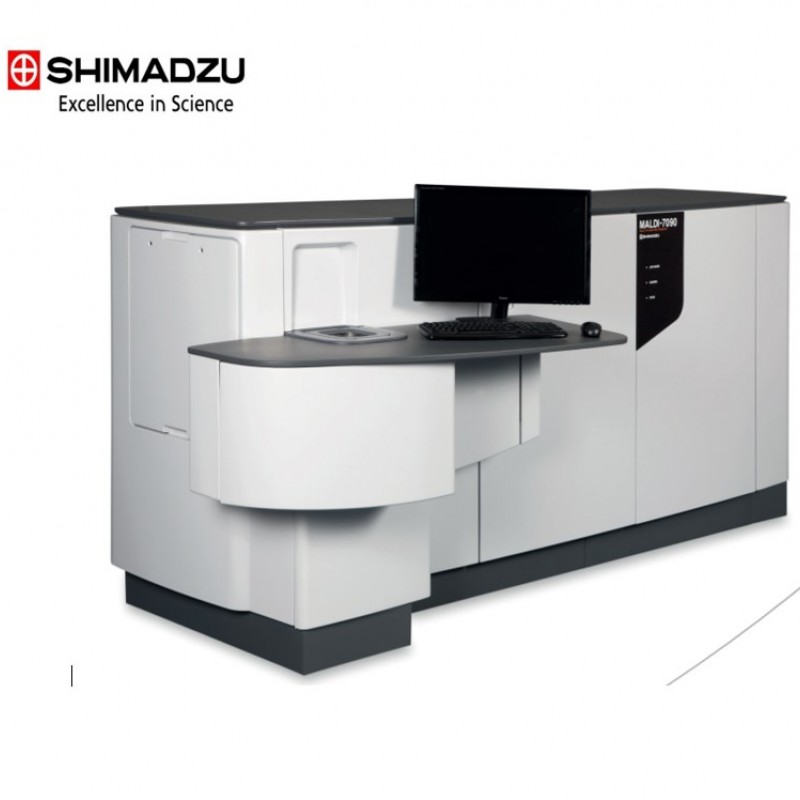
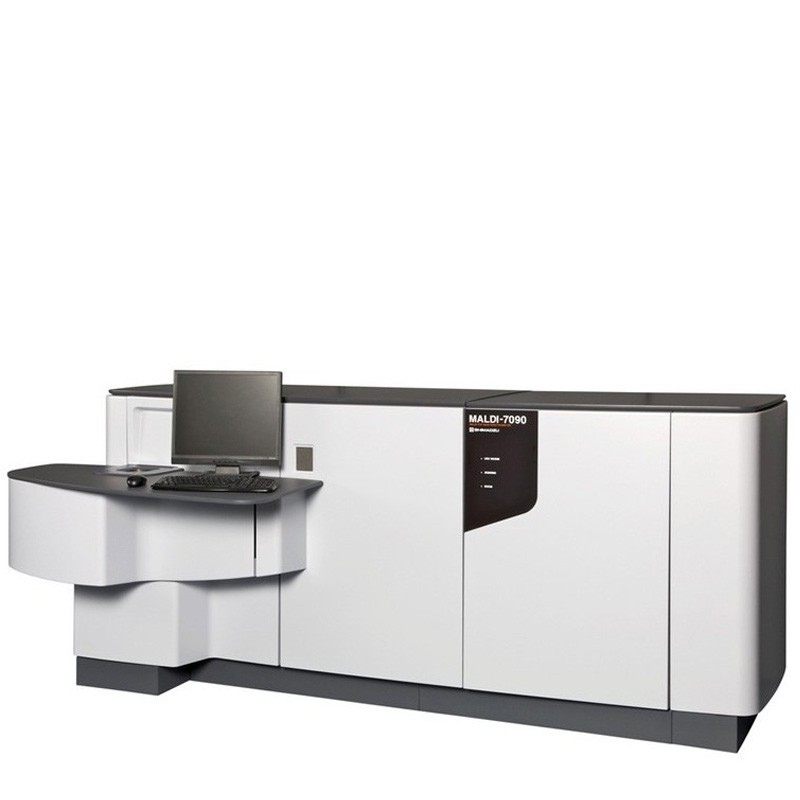
The MALDI-7090 Time of Flight Mass Spectrometer is targeted for proteomics and tissue imaging. Shimadzu combines matrix-assisted laser desorption/ionization (MALDI) extensive MALDI TOF-TOF mass spectrometry expertise with new patented technology to deliver cutting-edge performance in the identification and structural characterization of biomolecules.
MALDI-7090 sets a new benchmark in MALDI TOF-TOF design:
The MALDI-7090 includes a number of proprietary features to improve sensitivity and productivity.
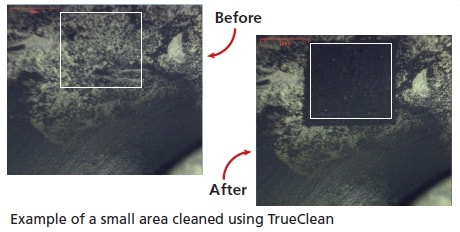
The MALDI-7090 sets a new standard in MS/MS acquisition. Several novel and exclusive technologies have been combined to create Hyper-MS2 delivering:
The MALDI-7090 is equipped with a dual wire-grid high resolution ion gate.
Compounds of similar nominal mass may produce MS/MS spectra that contain fragment ions from several precursors if not gated correctly. However, the high-resolution ion gate in the MALDI-7090 allows the individual gating of species close in nominal mass thus producing distinct fragment ion spectra.
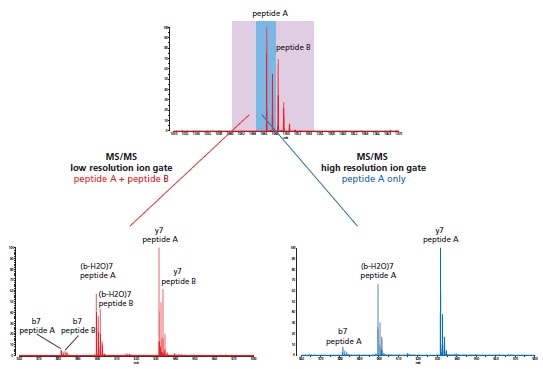
ASDF is a Shimadzu patented technology that enables unparalleled resolution in MS/MS acquisitions. Through correction of the axial spatial distribution of the ions generated, the mass resolution is significantly increased and becomes essentially independent of the laser power used to ionize the sample.
With ASDF, the MALDI-7090 can achieve mass resolution of 10,000 FHWM – unobtainable through pulsed extraction and ion optics alone.
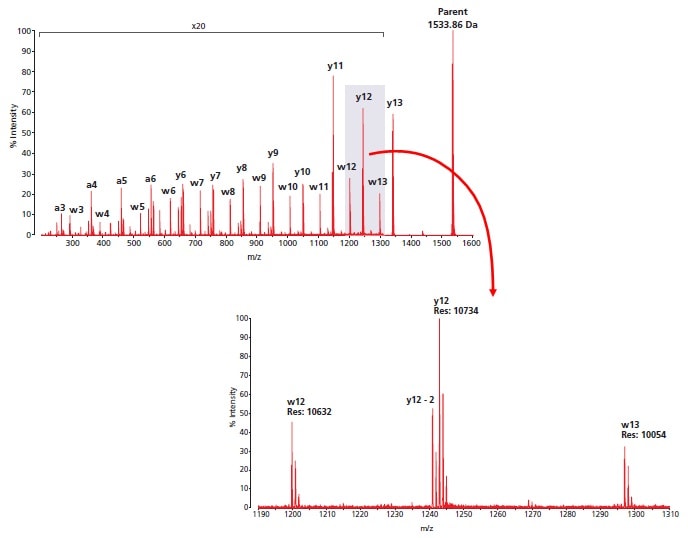
MS/MS fragmentation in the MALDI-7090 is true high-energy CID (HE-CID).
Ions enter the collision cell at 20keV extraction energy. Furthermore, collisions with helium rather than heavier gases (air or argon) result in the most efficient generation of ions only associated with HE-CID (e.g.: peptide side –chain and lipid backbone fragmentation).
MS/MS fragmentation is further enriched by retaining all of the metastable decay ions through the reflectron analyzer, maximizing the amount of information extracted from each sample.
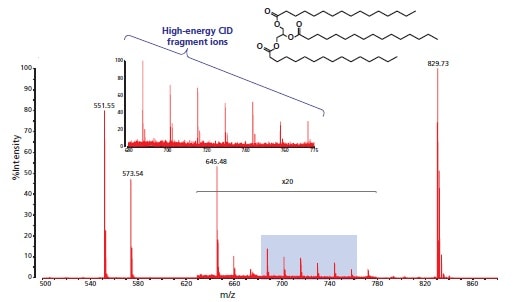
The MALDI-7090 can also be used in low-energy fragmentation mode without collision gas. Here the fragmentation relies on spontaneous metastable decay of the precursor and exhibits low-energy type ions.
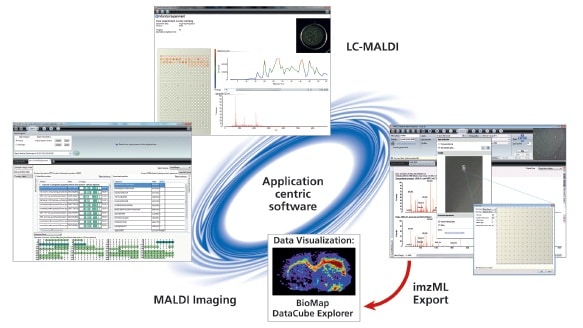
MALDI-7090 |
|
| Mass range : Linear mode | 1 to 500,000 Da |
| Mass range : Reflectron mode | 1 to 70,000 Da |
| Mass range : Linear mode | 6,000 |
| Mass range : Reflectron mode | 25,000 |
| Mass range : MS/MS | 10,000 |
| MS/MS function | CID/PSD |
| Mass accuracy : Reflectron mode | 2 ppm (internal standard) |
Food Safety and Environmental Analysis: This issue focuses on food safety and environmental analysis, and contains information on two collaborations including an interview with Professor Mondello, working on Comprehensive GC x GC / LC technology and a technical note on multi-residue analysis of pesticides in food, a collaborative work with the Food and Environment Research Agency, UK. As well as the latest news and applications.